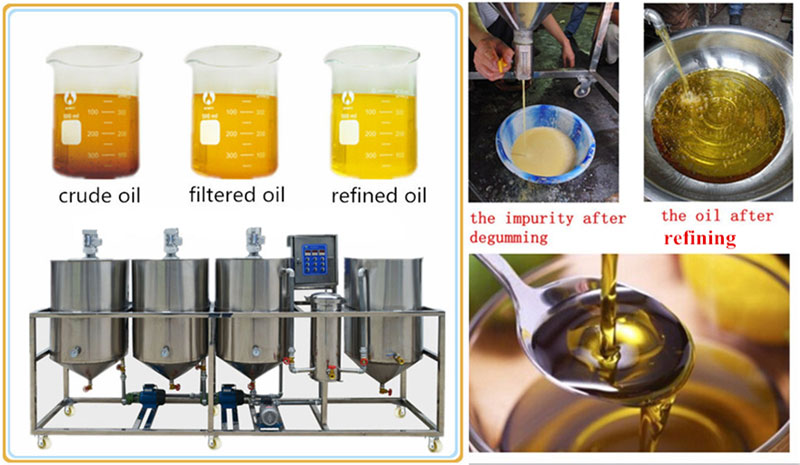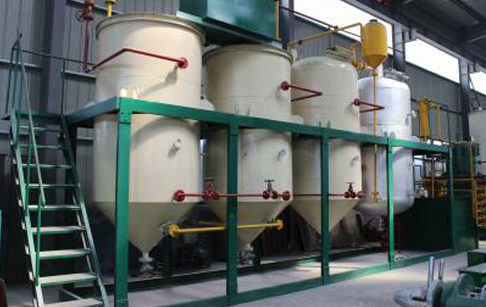1. Purpose of oil refining:
(1) Remove impurities in crude oil
Impurities in crude oil include mechanical impurities (sand, embryo powder, fiber, etc.), water-soluble impurities (moisture, protein, sugar, etc.), and fat-soluble impurities (free fatty acids, sterols, vitamins, pigments, phospholipids, etc.).
(2) Oil refining is beneficial to speed up the quality of refined oil.
(3) Oil refining is conducive to the safe storage of oil.

2. The conventional oil refining process mainly includes three sections: neutralization (degumming, deacidification), decolorization, and deodorization.
(1) Neutralization process of oil refining process:
Crude oil → heating → acid addition → reaction → alkali addition → reaction → centrifugal separation → water addition → centrifugal separation → drying
The role of oil neutralization is to remove mechanical impurities and water-soluble impurities; degumming, that is, to remove phospholipids; and deacidification, to remove free fatty acids. Heating water or steaming in the crude oil, stirring and mixing, and then standing for sedimentation or centrifugal separation of hydrated phospholipids can achieve the purpose of oil refining and degumming. The free fatty acids in crude oil are mostly above 0.5%, and the free fatty acid content in rice bran oil is as high as 10%. Deacidification usually adopts the method of adding alkali to neutralize the crude oil, adding sodium hydroxide of appropriate concentration to the crude oil, mixing and heating, stirring for a period of time, and then standing until the water phase precipitates to obtain oily feet or soap feet. The grease is washed with hot water, and then left to stand or centrifuged to separate the neutral oil from the remaining soapstock. At the same time, the produced fatty acid sodium salt can also adsorb and remove colloids, pigments, etc. together.

(2) The process of the decolorization section of the oil refining process:
Neutralize oil→heat→add white clay→decolorize→filter→fine filter→temporarily store
The function of oil refining and decolorization is mainly to remove the pigment in the oil; remove trace metals in the oil; remove residual trace soap particles, phospholipids and other colloids and some odorous substances; remove polycyclic aromatic hydrocarbons and residual pesticides. The crude oil contains pigments such as carotenoids and chlorophyll, which can be adsorbed and removed during alkali refining and deacidification, but it needs to be further decolorized when consumed directly. Grease refining and decolorization generally use adsorbents for adsorption and decolorization. Commonly used adsorbents include acid clay, activated clay and activated carbon.
(3) Deodorization section process of oil refining process:
Decoloring oil→gassing→heating→deodorization→cooling→fine filtration
The role of oil refining and deodorization is to remove odorous substances; speed up the smoke point of oils; change the stability, color and quality of oils; remove fatty acids, peroxides, polycyclic aromatic hydrocarbons, and residual pesticides. Most of the volatile peculiar smell substances in oils and fats are produced when the oils and fats are oxidized, and need to be deodorized to remove the odor. Oil refining and deodorization is the use of vacuum steam distillation to remove odorous substances. The oil is heated to 220-250°C and steam is introduced to achieve the deodorization effect.
Copyright © Henan Zhongxing Grain And Oil Machinery Co.,Ltd. All Rights Reserved. Powered by MetInfo